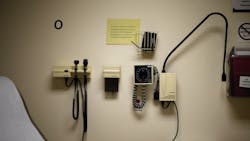FDA publishes discussion paper and seeks public input on 3D printing of medical devices at the point of care
The U.S. Food and Drug Administration (FDA) has published a discussion paper regarding 3D printing medical devices at the point of care (PoC), such as hospitals and doctor’s offices. The discussion paper does not constitute guidance; instead, its purpose is to gather feedback from the public to inform future policy development according to the release.
“The 3D printing of medical devices is at the forefront of innovation and healthcare. 3D printing at hospitals and other patient-care settings enables healthcare professionals to quickly create patient-matched devices and anatomical models for surgical planning, as well as many other uses that can help healthcare facilities rapidly respond to patient needs. The discussion paper provides insight into our perspective of the benefits and challenges of 3D printing at hospitals and other points of care and presents a potential approach for regulatory oversight under various scenarios to inform future policy development.
Importantly, the release of this discussion paper is intended to foster discussion and solicit feedback from the public. This feedback will help build the foundation for an appropriate regulatory approach for 3D printing at the point of care, personalized care for patients and new innovations in this area,” according to William Maisel, M.D.,M.P.H., director of the Office of Product Evaluation and Quality and Ed Margerrison, Ph.D., director of the Office of Science and Engineering Laboratories.
The paper provides relevant background, including terminology, a brief overview of FDA regulation of devices and 3D printing, and how capabilities at a 3D printing facility factor into device safety and effectiveness; Identifies challenges presented by 3D printed medical devices at the PoC and presents a potential approach for regulatory oversight under various scenarios to inform future policy development; and Poses questions to facilitate public comment.





